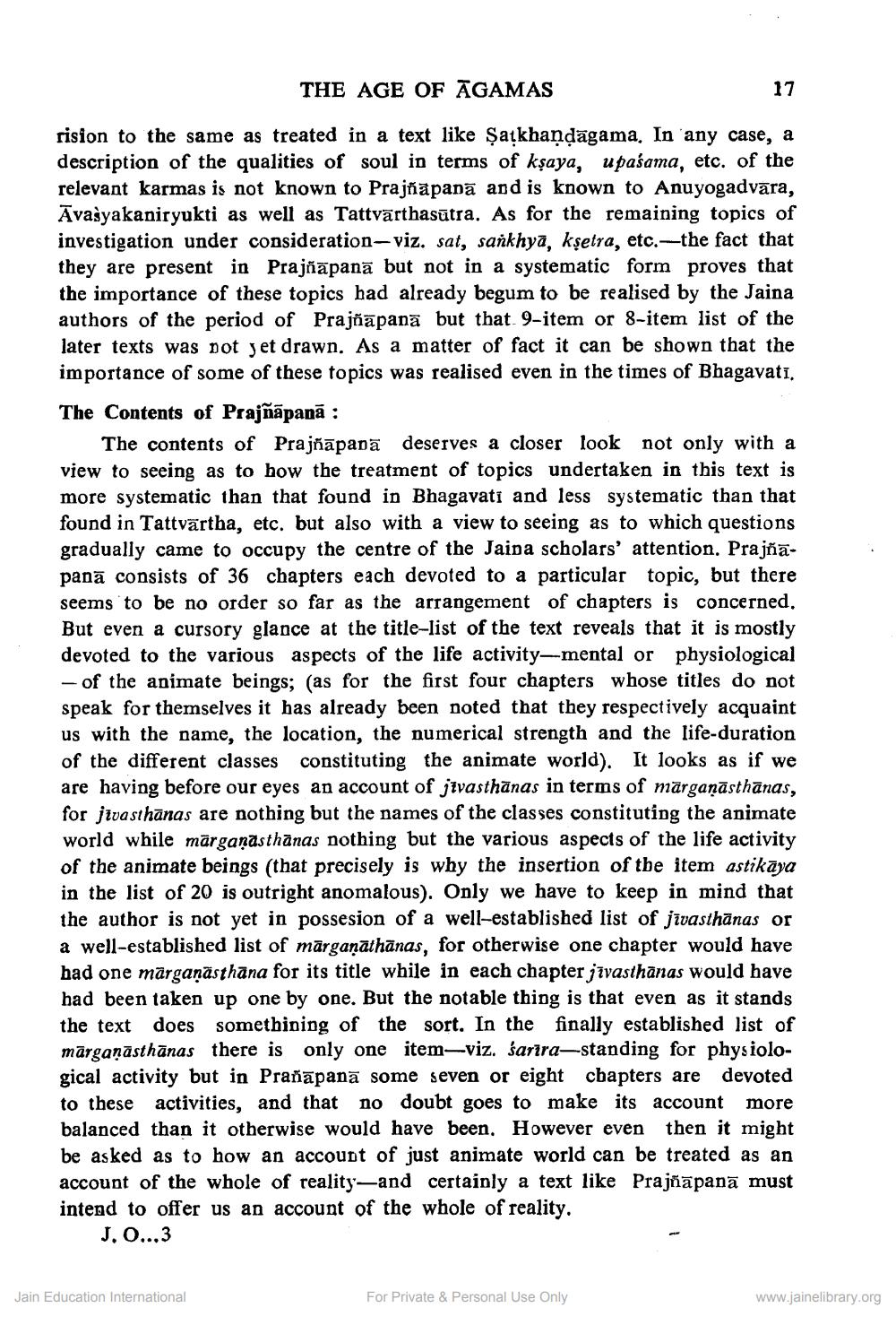________________
THE AGE OF AGAMAS
rision to the same as treated in a text like Satkhandāgama. In any case, a description of the qualities of soul in terms of kşaya, upašama, etc. of the relevant karmas is not known to Prajñāpanā and is known to Anuyogadvāra, Āvasyakaniryukti as well as Tattvārthasūtra. As for the remaining topics of investigation under consideration - viz. sat, sankhya, kşetra, etc.--the fact that they are present in Prajñāpanā but not in a systematic form proves that the importance of these topics had already begum to be realised by the Jaina authors of the period of Prajñāpanā but that. 9-item or 8-item list of the later texts was not yet drawn. As a matter of fact it can be shown that the importance of some of these topics was realised even in the times of Bhagavati.
The Contents of Prajñāpanā :
The contents of Prajñāpapā deserves a closer look not only with a view to seeing as to how the treatment of topics undertaken in this text is more systematic than that found in Bhagavati and less systematic than that found in Tattvärtha, etc. but also with a view to seeing as to which questions gradually came to occupy the centre of the Jaipa scholars' attention. Prajñāpanā consists of 36 chapters each devoted to a particular topic, but there seems to be no order so far as the arrangement of chapters is concerned. But even a cursory glance at the title-list of the text reveals that it is mostly devoted to the various aspects of the life activity-mental or physiological - of the animate beings; (as for the first four chapters whose titles do not speak for themselves it has already been noted that they respectively acquaint us with the name, the location, the numerical strength and the life-duration of the different classes constituting the animate world). It looks as if we are having before our eyes an account of jivasthānas in terms of märganāsthānas, for jīvasthānas are nothing but the names of the classes constituting the animate world while märganästhānas nothing but the various aspects of the life activity of the animate beings (that precisely is why the insertion of the item astikāya in the list of 20 is outright anomalous). Only we have to keep in mind that the author is not yet in possesion of a well-established list of jīvasthānas or a well-established list of mārganāthānas, for otherwise one chapter would have had one märganästhāna for its title while in each chapter jīvasthānas would have had been taken up one by one. But the notable thing is that even as it stands the text does somethining of the sort. In the finally established list of mārganāsthānas there is only one item-viz. sarira-standing for physiological activity but in Prañāpanā some seven or eight cbapters are devoted to these activities, and that no doubt goes to make its account more balanced than it otherwise would have been. However even then it might be asked as to how an account of just animate world can be treated as an account of the whole of reality-and certainly a text like Prajñāpanā must intend to offer us an account of the whole of reality.
J. O...3
Jain Education International
For Private & Personal Use Only
www.jainelibrary.org




